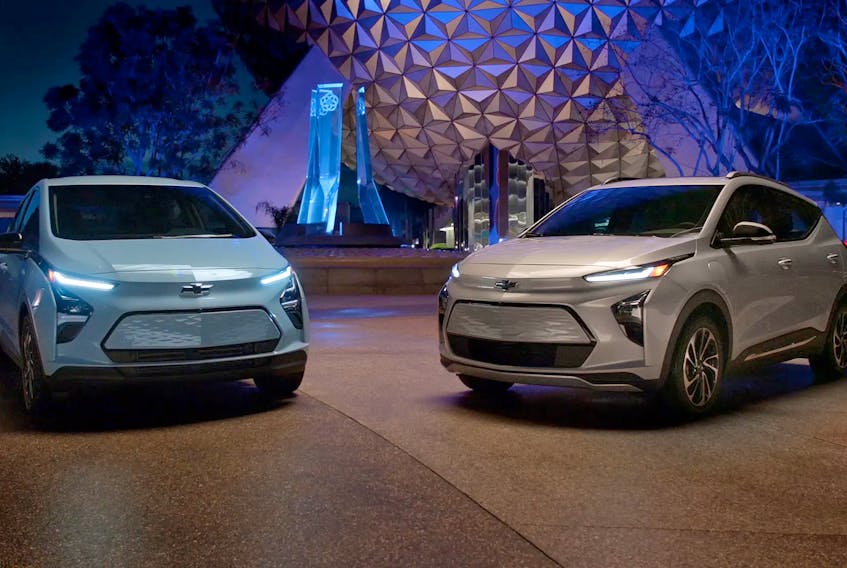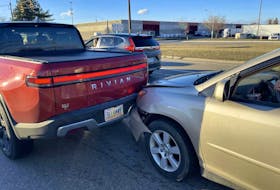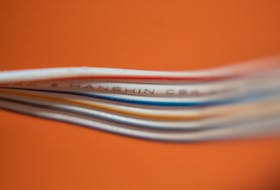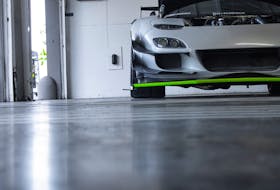Canada will play a major role in GM’s big push towards an electrified motoring future, with the automaker investing about a billion dollars into Canadian development of new products and technologies, including Electric Vehicle (EV) and battery tech.
A new line of electric delivery vehicles is readying for launch under GM’s new BrightDrop sub-brand, and when they arrive, these delivery vehicles will represent an all-electric made-in Canada solution to meet growing demand around the world.
But it’s passenger vehicles where you and I will probably be seeing the biggest changes in the coming years. Electric and hybrid-powered GM vehicles have existed for years, and a new generation of electric vehicles is set to begin arriving in the near future.

There’s an all-new Chevy Bolt; a new all-electric Cadillac called the Lyriq is in the works; and the Hummer name is set to bow once again — this time as an all-electric supertruck from GMC that offers 1,000 horsepower and never needs an oil change.
Demand in EVs is forecasted to double between 2025 and 2030, to about three million units per year in the U.S. With the cost of EV ownership expected to drop, and growing charging infrastructure along the way, GM says the time is right to make this push towards an electric motoring future.
“General Motors is clear about the stance that climate change is real and man-made,” says Andy Oury, a battery engineer at General Motors. Oury has worked on various battery designs and systems for General Motors over the course of 10 years. He’s one of the creators of Ultium, the next-generation electric-drive system that will power future GM EVs.
“So, this is our response to that as well,” he says. “It’s not just that we can do cool vehicles, it’s not just because customers are asking for them — it’s that this is an important part of the way we need to operate in the communities we live in.”
Of course, EVs can make a more positive impact when more people drive them — which is exactly why GM’s Ultium tech is designed to make driving an electric vehicle feasible for more drivers. It is a new battery and drive module technology that GM is using to set up for an incoming wave of EVs.

As demand grows, so will the number of different types of electric vehicles offered. When customer demands change and shift, Ultium’s flexible and scalable architecture means GM can deploy more vehicles, more quickly, using a common drive system.
Its first advantage? Keeping costs down. A unique battery chemistry created in partnership with LG has resulted in more nickel and about 70 per cent less cobalt in their chemistry. Cobalt is expensive, so whipping up a new battery recipe that uses much less of it brings the cost down. “We’ll be able to offer customers a wide range options that suit their range and budget needs,” Oury mentions.
As a Sudburian who makes his home in the world’s nickel capital, this is exciting news for your writer.
Special Ultium battery cells use a unique pouch-style design, allowing them to be packaged vertically or horizontally to create battery packs that are very flexible in terms of the sizes, shapes, and thicknesses into which they can be formed. This flexibility means Ultium can easily power anything from an extreme off-roader to an affordable hatchback to a high-performance sports car — with all-, front-, or rear-wheel drive configurations possible. In some applications, electric motors can even be synchronized via software to simulate differential-lock in off-road settings.
And, by creating a scalable architecture of batteries and motors combined into drive units, Ultium reduces costs even further by reducing complexity. Right now, GM offers hundreds of driveline configurations across all of their internal combustion vehicles. With Ultium battery architecture, they’d need fewer than 20 different configurations, each with less complexity than a conventional combustion driveline.
Ultium’s flexibility means the shape, size, and position of the drive module can be fully optimized to enhance the vehicle’s handling, centre of gravity, and even interior space. The intent is to maximize energy storage while minimizing cost and complexity. There’s even a new wireless battery management system which further cuts costs and complexity, while doing away with miles of wiring.

It’s all to help lower costs and increase energy storage, making the EV more appealing to potential buyers.
Further steps towards that goal include high-performance charging, with some innovative new tech allowing the Ultium battery pack to physically switch between series and parallel, enabling even faster charging when connected to new 800-volt fast-charge stations. By physically reconfiguring the electrical arrangement between the battery cells, compatible chargers can add 160 kilometers of range to an Ultium battery in just 10 minutes or less, or recharge fully in the time it takes to grab a load of groceries. Faster charging is more convenient charging, which makes it easier to attract more EV-curious shoppers.
Some Ultium-powered vehicles could provide up to 644 km of driving per charge, while offering zero-to-100-km/h sprints in as little as 3.0 seconds. At writing, battery options will range from 50 to 200 kWh, with most drive units designed and manufactured in house.
And remember: with the ability to package the battery pack and drive units in a variety of shapes and sizes, Ultium makes it easy to achieve the weight balance and centre of gravity targets required by high-performance vehicles.
Anyone else excited to see what’s next?









